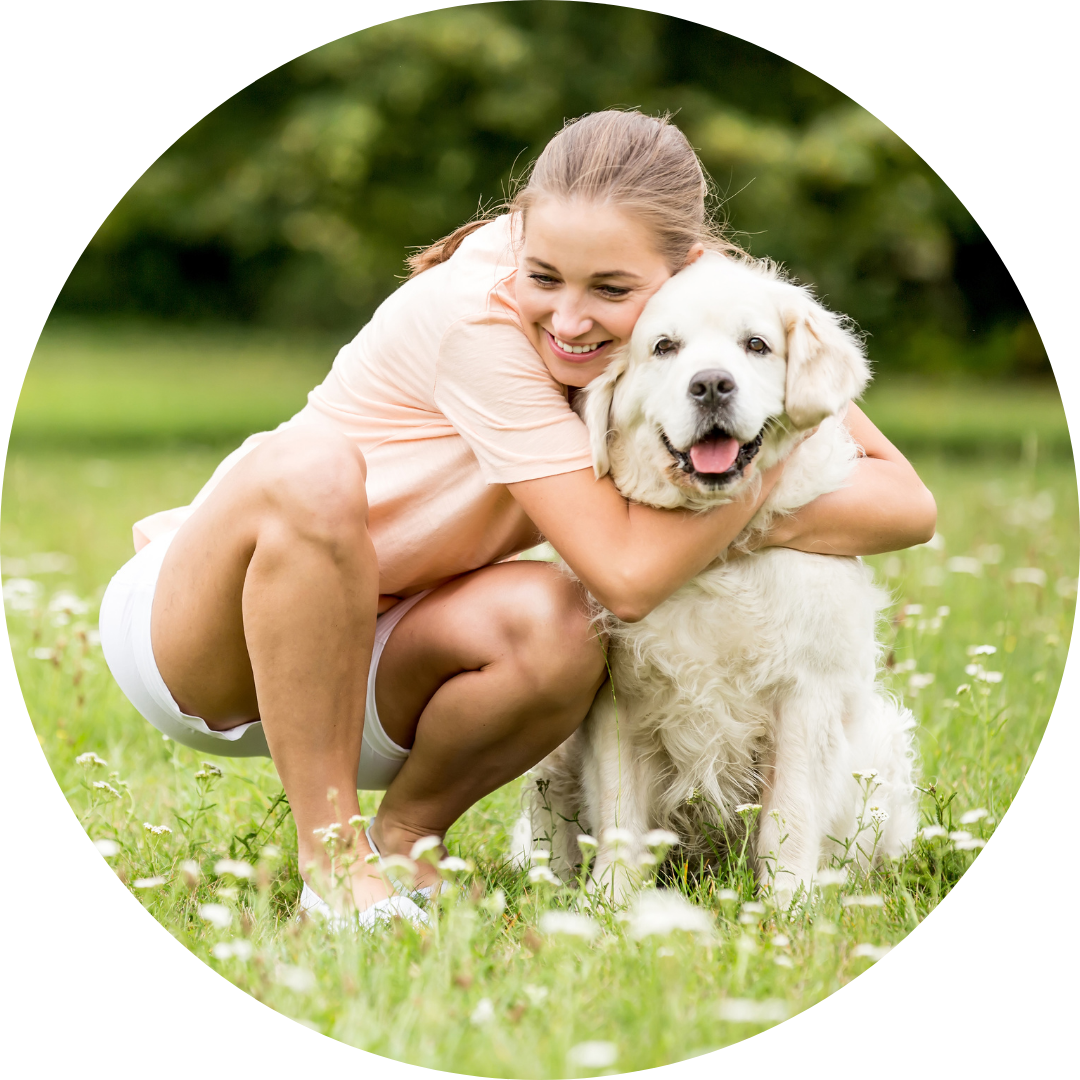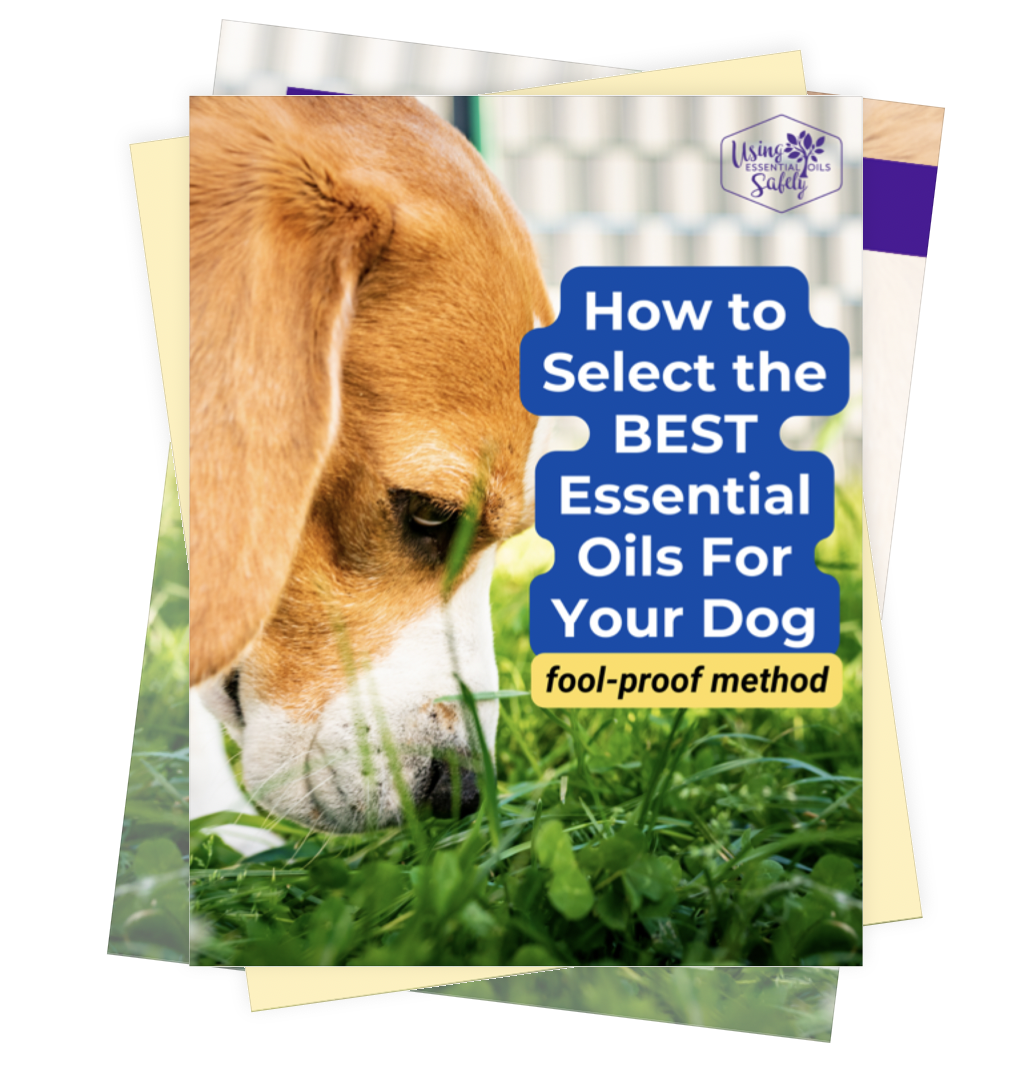
A lot of people struggle...
A lot of people struggle when it comes to using essential oils with their pets. And it's no surprise when you look at all of the unsafe information out there. I've seen recommendations for dropping essential oils into your pet's food, rubbing them into your dog's fur without diluting, and brushing your puppy's teeth with them. It makes me cringe. None of us want to see our puppy suffering from adverse reactions that could be avoided - if we weren't misinformed.
As a Certified Clinical Aromatherapist, I know the benefits of essential oils as well as the safety. And in this episode, I'm sharing the fool-proof way to select the best essential oils for your dog in four easy steps. And I promise you don't need to know any chemistry to do this.
...and I'll tell you what to do in case your dog accidentally licks, and therefore eats, the essential oil remedy.
Not following this process can leave your dog still suffering with the same issue - or worse - having new reactions due to essential oil misuse. So let's make sure that doesn't happen to you.
How to Select the Best Essential Oils for Your Dog (Fool-Proof Method!)
When we use essential oils with humans, there are safety considerations to factor in. And with pets... there's another set of guidelines.
You can't possibly know without proper training if the info you're Googling is safe or not. And that's not your fault. It really isn't. There's no regulation in the industry. Therefore, anyone who reps essential oils can post about the different ways to use them. And that's when you see unsafe essential oil information in your feed.
The good news is now that you know there is a safe way to use them, you can make better choices moving forward.
Today, we're talking about a fool-proof way to select the best essential oils for your dog in four easy steps without knowing any chemistry. And what to do if your dog accidentally licks or consumes the essential oil remedy.
Let's start by introducing a word you probably haven't heard before - and one that I'd like to get out of the way since it's a long one: zoopharmacognosy. It's a word coined by Carolyn Ingraham, and it's otherwise known as the "let your dog choose their own essential oil" approach.
Let me explain it in her words: "Applied zoopharmacognosy enables self-medicative behavior in domesticated or captive animals by offering plant extracts that would contain the same or similar constituents to those found in an animal's natural environment. The practice encourages and allows an animal to guide its own health. Since unlike their wild counterparts, captive and domesticated animals rarely have the opportunity to forage on medical plants. The extracts offered include a variety of essential oils, absolutes, plant extracts, macerated oils, tubers, clays, algae, seaweeds, and minerals. Once the animal has selected its remedy, it will then guide the session by inhaling it, taking it orally, or by rubbing a part of its body into it." Carolyn Ingraham.
It's all about letting your dog self-select the best remedy. But we're also going to give them some help. So let's talk about what that looks like in four simple steps.
So there you have it! You now know the foolproof way to select the best essential oils for your dog in four easy steps. |
Now for what to do if your dog accidentally licks or consumes the remedy you want them to only inhale...
First, I suggest you do everything possible to prevent your dog from licking the remedy. But if they do, don't panic.
While I do not encourage or recommend ingestion as a remedy option, animal aromatherapy expert Nayana Morag says when it comes to dogs "they are more likely to want the oils orally if they have a physical problem, or one that is not very deeply rooted. The sense of smell and taste function together, and most essential oil taken in the mouth will be absorbed into the olfactory cavity." She continues, "if your animal tries to lick the bottle or behaves very orally, dab a small amount of diluted oil on your hand, or on a saucer or bucket if they do not want to lick from your hand and allow him to lick it off. While the animal is looking, keep the open bottle of oil in range of his nostrils so he is also inhaling the essential oil."
I factored in known safety issues for essential oils in my book, Using Essential Oils Safely With Dogs. It's very important that you adhere to the safety guidelines in that book to make sure your pet stays safe. If you go over the recommended dilution included with each recipe, you could expose your pet to adverse reactions.

To learn more about resources mentioned, visit our Dog Resources page.
These tips are just the beginning...go deeper with my book Using Essential Oils Safely with DOGS!

In upcoming episodes we'll continue to explore using essential oils safely with your dog and other pets, buuuuut if you don't want to wait you can grab my book, Using Essential Oils Safely With DOGS.
In this book, I've included safety profiles for 250 essential oils clearly marked, so you know which essential oils are safe to use with your dog and which ones to avoid.
You'll also find recipes designed specifically for use with dogs with the same detailed information I include inside Recipes Lab™ for humans, the essential oils best to use for the health issue, specific dilution, exactly how to use, and more...

Send this info to my Inbox!
Need a way to print the info on this page? Let me know where to send it. Your info is never shared with anyone, and you can unsubscribe any time.
DISCLAIMER: You may have a serious health issue that requires medical attention. The information provided is for educational purposes and is not intended to be a substitute for professional medical advice, diagnosis, or treatment. Always seek the advice of a qualified health provider about any questions you may have regarding a medical condition. Never disregard professional medical advice or delay in seeking care because of something you have read here. Read full disclaimer here.
© 2024 Lea Jacobson, CCA | Using Essential Oils Safely | UEOS, LLC | All Rights Reserved.
